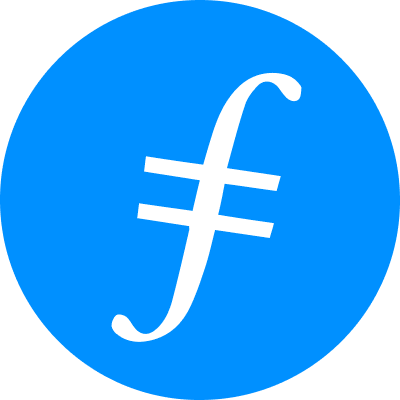Dialogue on Filecoin: How to Balance Storage and Computation? Where Will FVM Head?
Author: Loopy, Odaily Planet Daily
Editor: Hao Fangzhou
Original Title: "Odaily Interview with Filecoin: How to Balance Storage and Computation? Where Will FVM Head?"

For investors with a certain understanding of the crypto world, Filecoin is likely a familiar name. As a veteran project, the Filecoin protocol was proposed as early as 2014. It is also one of the most well-known distributed storage networks today.
In March of this year, the Filecoin Virtual Machine (FVM) officially launched, allowing the Filecoin blockchain to support smart contracts and user programmability through FVM. With FVM, developers can deploy smart contracts and plan data storage, governance, and monetization in the open market.
Recently, the Filecoin Dev Summit and Token 2049 were held simultaneously in Singapore. Odaily Planet Daily had the privilege of interviewing Molly Mackinlay, the IPFS & Filecoin Lead at Protocol Labs. She reviewed the recent developments of Filecoin and provided insights into its future direction.

Molly Mackinlay, IPFS & Filecoin Lead
The following is a transcript of the interview, with some content edited.
How has the data performance been since FVM launched six months ago?
Odaily Planet Daily: It has been six months since the launch of FVM. How has its overall market performance been? Can you provide some specific data?
Molly Mackinlay: Since its launch in March, FVM has been operational for six months. During this time, Filecoin's FVM has grown from a network that didn't exist at all to currently ranking 32nd on DeFiLlama, with a Total Value Locked (TVL) of approximately $80 million.
This is quite impressive for a network that is only six months old.
Currently, nearly 3,000 smart contracts have been deployed on Filecoin. The three most popular ones are GLIF, HashKing, and STFIL.
These protocols aim to facilitate collaboration between token holders and storage providers, ensuring that there is sufficient collateral to protect the storage capacity and the data stored in Filecoin. Through these DeFi protocols, token holders can deposit FIL. So far, 7.38 million FIL have flowed to storage providers through FVM. With these FIL, the network's security can be ensured, while also helping them develop their own operations and the Filecoin ecosystem.
Previously, storage providers wanted more capacity and data but could not obtain sufficient FIL as collateral.
Thus, these DeFi protocols have filled a very important gap in the ecosystem—over 2,600 independent token holders are participating in staking to earn rewards from storage providers. More than 300 storage providers are already using these DeFi protocols.
Overall, there are currently many transactions deployed on FVM, and the projects are quite diverse.
Odaily Planet Daily: What are the current use cases for Filecoin?
Molly Mackinlay: So far, Filecoin has attracted a large amount of storage capacity into the network. Over the past year, we have seen significant growth in the data stored on Filecoin.
Current storage clients include the Victor Chang Cardiac Research Institute* (Note: VCCRI is a renowned Australian non-profit medical research institute dedicated to heart disease research)*, CERN, and the University of California, Berkeley. These institutions are storing their data on Filecoin.
Odaily Planet Daily: What is Filecoin's official roadmap? What has been the recent "big event"?
Molly Mackinlay: As a decentralized ecosystem, Filecoin finds it difficult to have any "official roadmap." Many things happen quietly—there are too many different teams continuously building.
Currently, we are focusing our efforts on three main areas:
Data Retrieval: After data has been stored in FIL for a period, ensuring that people can still retrieve data from Filecoin at different speeds, latencies, and frequencies. At the same time, providing good auditability and better protocols.
Filecoin now has a new feature—HTTP data retrieval. CDNs are currently being deployed over Filecoin storage providers to enable faster data access. So far, there are over 3,000 retrieval providers in the network. They are working to attract clients who wish to accelerate their content and are enhancing customer adoption.
Computational Power: The Epik Protocol is currently running as a computational Layer 2 test network built on top of Filecoin storage, allowing for computational work on data stored on Filecoin. The Epik Protocol plans to launch its mainnet early next year.
In 2024, we will see more new computational networks launched on Filecoin, utilizing L2 scaling technology. This allows for both data storage and computation, such as generative AI, distributed scientific data processing, and other use cases.
Retrieval is an area that is accelerating, while computation will lay the foundation. The incentive program will kick off in the fourth quarter, and the mainnet will launch in the first quarter of next year. In the second quarter of next year, there may be some other plans. I look forward to seeing many computational networks built on Filecoin.
Scalability: Utilizing our IPC technology (InterPlanetary Consensus). IPC is an L2 scaling technology that allows new subnets to diverge from Filecoin. This can support the development of retrieval and computational networks, but it can also support many other use cases, such as data availability or other Web 3 infrastructure applications built on Filecoin.
IPC has already been prototyped on the mainnet. It is still under continuous development, and its scale is expanding. A more general version will be launched at the end of this year or early next year.
In the next six months, the network will be adding many new features and capabilities. This enables developers to build more Web3 networks on Filecoin and utilize the data stored in Filecoin as a foundation to support builders on this path.
Scalability: There Will Be More Than One L2
Odaily Planet Daily: Filecoin is known for its storage network, while FVM is a computational network. How do you balance storage and computation? Where will Filecoin head in the future?
Molly Mackinlay: FVM makes Filecoin's data storage more powerful; it expands and enhances Filecoin. Storage and computation are not mutually exclusive, nor are they competitors.
FVM brings more value to the existing Filecoin data storage. Users can see this in the dApps deployed on FVM. These DeFi protocols bring value to storage providers while helping token holders utilize their tokens within the network.
Some interesting data storage applications are being built on FVM. For example, permanent storage, transactions across multiple jurisdictions, and long-term storage transactions that exceed baseline standards. These enhance interaction with the Filecoin storage layer and provide programmability.
I believe this is not one or the other, but rather the combined strength of both.
The first runtime of FVM is the Ethereum Virtual Machine (EVM), but our design approach is to introduce many runtimes into the same super virtual machine system. Therefore, we can use both EVM and Wasm * (Note: Wasm VM is another commonly used blockchain virtual machine different from EVM)* simultaneously.
This means that any developer in the ecosystem can bring their existing contracts into Filecoin, enhance their interaction with storage, and connect them to the same runtime environment of other networks.
Filecoin aims to collaborate with the entire Web3 ecosystem, including Ethereum, Cosmos, and other ecosystems. Filecoin's infrastructure services provide strong support for Web2, such as AWS storage, computation, caching, data processing, etc. All of this should also be brought into the different chains of Web3.
Odaily Planet Daily: Are there any key areas that Filecoin is focusing on?
Molly Mackinlay: FVM and the L2 networks built on Filecoin are very interested in many areas. We have computational layer tools like Epik Protocol, which hope to provide computational services alongside Filecoin storage. Many other computational networks are about to launch.
Additionally, there are some retrieval services that are happy to use L2 tools to track retrieval incentives provided in the Filecoin ecosystem.
FIL has fast block times and quick finality. However, currently, Filecoin's block time is 30 seconds, lasting up to 900 epochs. This speed is still very slow for activities such as quick audits and DeFi interactions.
Every time a query is submitted to the system, a fast response time is required. The IPC team has already created a hosted L2 on Filecoin, which is now live.
Developers can start building immediately. It provides block times of about 1 to 3 seconds and finality of a single epoch. Therefore, for developers, it can provide a flexible user experience for users building on it.
Thus, I believe that in addition to this, we will also see many other L2 applications, such as data availability and other Web3 infrastructure. But I am very interested in expanding the entire Filecoin ecosystem through this path.











